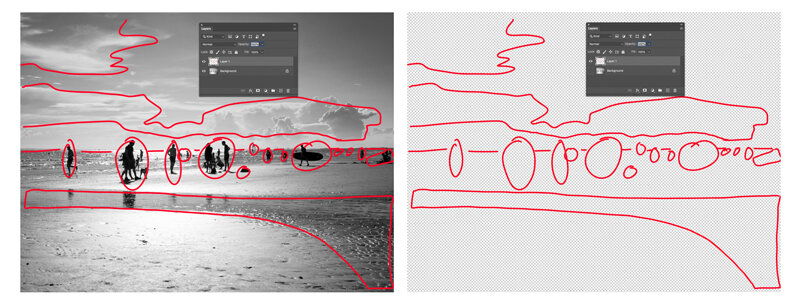How to improve your photographic composition without using your camera
Analysing your own photographs and working out whether they “work” or not is difficult to do objectively. You are emotionally attached to the photograph and your brain will also overlay information from the time you took the shot (how you felt, who else was there, why you took the image) both of which interfere with your ability to take a detached view of the image.
To analyse images objectively you will need a piece of tracing paper and a soft pencil. If you have Photoshop you can also do this by opening up a new layer over your image to act as the tracing paper in step 1 and then turn off the background image to do step 2:
Take one of your images and trace over the main elements of it.
Examine the tracing separately from the image and see if it “works”. If you were drawing the same scene is this where you would have placed everything on the paper?
If not, how can you improve?
Are your improvements achievable? For example, you can’t move a lighthouse but you can move your camera in relation to the lighthouse.
To take this exercise further trace some famous photographs to see if you can work out why they work.
Is there a main subject?
How does the photographer signal what is the main subject?
Where does your eye settle? Is it on the main subject?
If your eye keeps moving, why is that?
What role to all the different elements that aren’t the main subject play in the composition?
Would you have done anything differently?
Emma has an intermediate-level course called “Composition: Beyond the Basics” which breaks down the art of composition into practical steps that you can use straight away, not abstract ideas that don’t help your photography along.
Online beginner’s camera course
Emma’s flagship photography course, A Year With My Camera is free by email. If you’re a beginner, join here and get started today:


